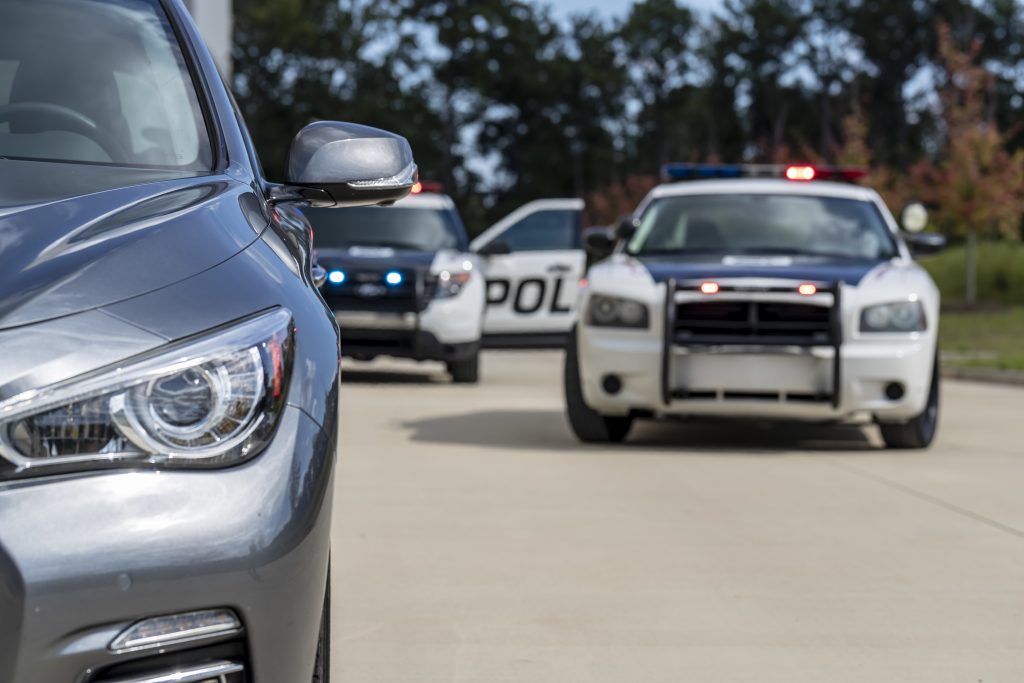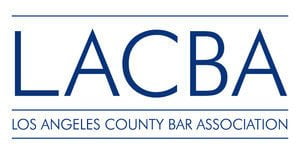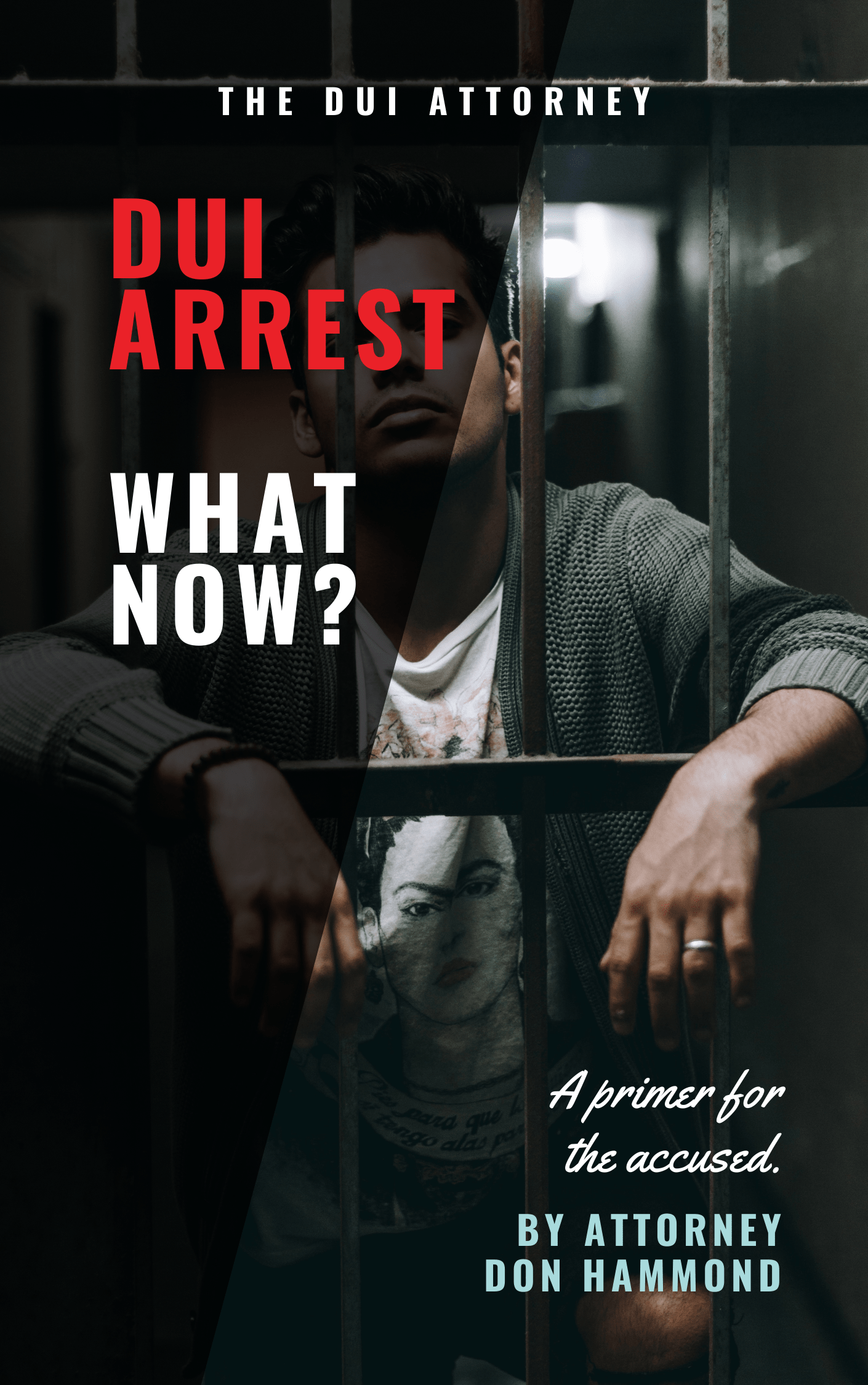
The manual says that there are 24 vehicle motion cues that officers look for as an initial clue that a driver may be under the influence. During the stopping sequence, there are an additional six cues that may indicate that a driver is under the influence.
The second phase of a DUI investigation involves the personal contact that occurs after the officer pulls over the vehicle. The officer will look for any and all indications of intoxication, including the smell of alcohol in the vehicle, red or watery eyes, a flushed face, and slurred speech. They will also conduct divided attention tasks, which may seem routine but are actually tactical. For example, they will ask the driver to get their license, insurance, and registration while asking them an unrelated question, such as where they have been that night. The purpose of this is to determine whether the driver is able to focus both on gathering the requested documents and answering the questions.
People who are drunk will give police officers the wrong documents and answer the wrong questions, but I find that most of my clients do very well on these divided attention tasks. When this is the case, it serves as evidence that flies in the face of what the police training manual says in terms of what an intoxicated person is and is not able to do.
If the officer detects an odor of alcohol, observes red and watery eyes or slurred speech, or finds that the driver is unable to complete the divided attention tasks, then they will probably ask the driver to step out of the vehicle. When a driver is asked to step out of the vehicle, there is a 95% chance that they will be arrested, so there is no reason for the individual to provide any additional evidence for the officer’s investigation. At that point,
the officer’s intention will be to conduct a series of field sobriety tests and ask a series of questions that will be included in the police report with the intention of getting a DUI conviction.
The officer will ask how much the driver has been drinking, when they were drinking, where they were drinking, how much they have eaten, when they ate, when they last slept, and for how long they slept. The purpose of asking all of these questions is to develop testimony and set up a government criminalist for what’s called retrograde extrapolation. Because there is a delay between the time of driving and the time the actual chemical test is conducted, the prosecution must try to prove what the actual BAC was at the time of driving. There is no reason to answer these questions; if they do not have this information, then they will have no basis for doing a retrograde extrapolation.
Next, the officer will attempt to conduct the field sobriety tests. The three that are supposedly validated are the horizontal gaze nystagmus test, the walk-and-turn test, and the one-leg-stand test. There’s no reason to participated in any of these tests. The horizontal gaze is an eye test that requires the subject to follow a pen or other object with their eyes and without making any head movements. The purpose is to identify a phenomenon called nystagmus, which is an involuntary twitching of the eye that can be caused by alcohol and about 50 other conditions. This test takes a minimum of 82 seconds, but officers very often do it in 25 to 30 seconds. My favorite page of the manual says that if any part of the test is altered, the validity is compromised. This means that if a test isn’t done correctly, the result should be considered invalid.
The walk-and-turn and one-leg-stand tests are in many ways balance tests. I have held many community events and presentations where I pulled perfectly sober people out of the audience and put them through these field sobriety tests (remember that I’m trained to conduct these tests at a higher level than the average officer), and even they failed the tests.
There are many factors that can impact someone’s ability to stand on one leg or walk in heel-to-toe fashion, such as a hip or knee replacement, fatigue, a recent workout, or an inner ear problem. Many officers completely disregard the factors which could contribute to poor performance on these tests. In fact, the training manual dictates that these tests are not validated for anyone who is over 65 years of age or 50 pounds overweight, yet the average officer does not take this into account. Furthermore, even if they do acknowledge that someone who is over 65 is going to struggle, they won’t consider that
someone who is 64 might also struggle. It is necessary to consider the individual factors in the case to determine why someone may have performed poorly on these tests despite being sober. A qualified attorney will examine all aspects of the case in order to identify the strongest possible defense.
Some officers will conduct a modified Romberg test, which requires the subject to put their head back, close their eyes, and estimate when 30 seconds have passed. The claim is that this will indicate whether the subject’s internal clock is affected by the impacts of alcohol on the central nervous system. There is also a finger-to-nose test, which requires the subject to touch their fingertip to their nose. Oftentimes, a person will use the pad of their finger rather than the tip of their finger, which officers almost always perceive as a sign of intoxication, despite the fact that the instructions are not very clear and the average person doesn’t differentiate those parts of the finger.
The officers will also ask suspects to blow into a portable alcohol screening device, which is a handheld unit that is used in the field. This is optional, and should be refused because there are numerous problems with this test; it is not nearly as robust a system as the actual breathalyzer at the station, and there are fewer safeguards. By consenting to the portable breath test, a suspect is only providing the police with additional evidence.
Breath testing devices are notoriously inaccurate during the absorption phase of alcohol metabolization. When someone takes a drink of alcohol, it is not instantly absorbed into the bloodstream; rather, it first undergoes a process called absorption. Governmental chemists will say that this process takes about 45 minutes, but scientific studies say it can range from five minutes to three hours, depending on a number of factors. This means that if someone is still absorbing alcohol, a breath test is not going to be accurate.
There are also problems with mouth alcohol, since anything that brings alcohol into the mouth (e.g. breath spray, acid reflux, burping) within about 20 minutes of breathing into the machine is going to result in an alcohol level spike. Officers are required to observe the suspect for 15 to 20 minutes prior to administering the portable alcohol screening test to ensure that no alcohol is introduced into the mouth by any source. Of course, when the officer turns their back to retrieve the device, they are no longer observing, so this is something a defense attorney can sometimes use to the defendant’s advantage. However, it is best to altogether avoid a position of having to convince the government that there are problems with their test, so suspects should simply refuse to take them.
In the vast majority of my cases, people consent to these tests and end up getting arrested. Once the arrest has been made, the officer should inform the suspect that they have a choice of either a blood test or a breath test and that they have the right to refuse, but that doing so will result in a very long suspension of driving privileges with no option for an interlock device or a restricted license for driving to and from work.
At this point, there will be no opportunity for the suspect to speak with a lawyer, but I would usually recommend choosing a blood test as opposed to a breath test. The exception is if the person knows they have other drugs in addition to alcohol in their system, as this can make for a difficult case to defend. However, if the officer has any reason to suspect that the individual is under the influence of something other than alcohol, then they will require a blood test.
If the government is going to take blood from one of its citizens, the government has an obligation to do that in accordance with accepted medical practices. If they have failed to follow accepted medical practices, and, consequently, increased the risk of harm in that minor surgical procedure, then that can lead to suppression of the blood sample in court, which leads to better results. If evidence is suppressed, then the government is prohibited from using it. In some ways, it is easier to challenge blood tests, which is one reason I like them. Another advantage to a blood test is that the sample will be saved, which means it can later be tested in an independent lab. To ensure that the sample was not swapped with anyone else’s, we can get a blood split from the government and have the DNA tested.
There are several things that can be problematic in breath testing as well. In every case, we will obtain the maintenance and calibration records for the particular testing device to make sure that it was reading correctly with known samples and that it was properly maintained as it’s supposed to be under Title 17.
Following the chemical test, the individual will be booked at the station and their fingerprints and photograph will be taken. After five or six hours, they will be released on their own recognizance. It is rare, but sometimes bail will have to be posted in order to be released.
When Someone Is Released From Custody, What Do They Leave With, And What Will Be The Next Step In Their Case?
Someone who has just been released from custody after a DUI arrest will leave with a citation that will look a lot like a traffic ticket, and it will list the court date on the bottom (it’s important to make sure the date is legible). The other item will be a pink piece of paper which serves as a temporary driver’s license and a notice that the individual has 10 days to contact the Department of Motor Vehicles and request a hearing regarding their driving privileges; if this is not done within 10 days, then the driving privileges will be automatically suspended 30 days after the arrest.
If the individual needs to request the hearing, then they will call the number listed on their temporary license and be placed on hold for hours and hours, only to be told that they should contact the local driver safety office. We prefer to fax hearing requests to the local driver safety office so that we have a record that it was actually done within the 10 days, and so that our clients do not have to waste their time sitting on hold.
At What Point In A DUI Case Should a Lawyer Generally Get Involved?
I want to be involved in a DUI case as soon as possible! From the date of the arrest, a defendant has only 10 days to request a DMV hearing before that right is lost. In many cases, the DMV hearing is helpful as a discovery method. For example, we may want to subpoena the police officer to the DMV hearing to cross-examine them and obtain a transcript of that cross-examination to use in court at a suppression hearing or at trial. Missing the 10-day deadline will result not only in the defendant’s license being suspended, but also in the loss of a discovery tool that could play an important role in the case.
With that said, missing the deadline does not mean that there is no hope for a case and that an attorney should not be hired. We are happy to begin working on a case at any point in time and will put our best efforts toward salvaging what’s left and fighting for the right result. If we can show that there’s good cause, we may be able to submit a late hearing request; if granted, this would allow us to have the DMV hearing even if the deadline was missed.
Very often, the court hearing date will be set three or four months down the line, so people will set it aside and contact us as the court date approaches. At that point, we’ll get to work on setting up the case for success.
For more information on Timeline Of DUI Arrest In California, an initial consultation is your next best step. Get the information and legal answers you are seeking by calling (323) 529-3660 today.










